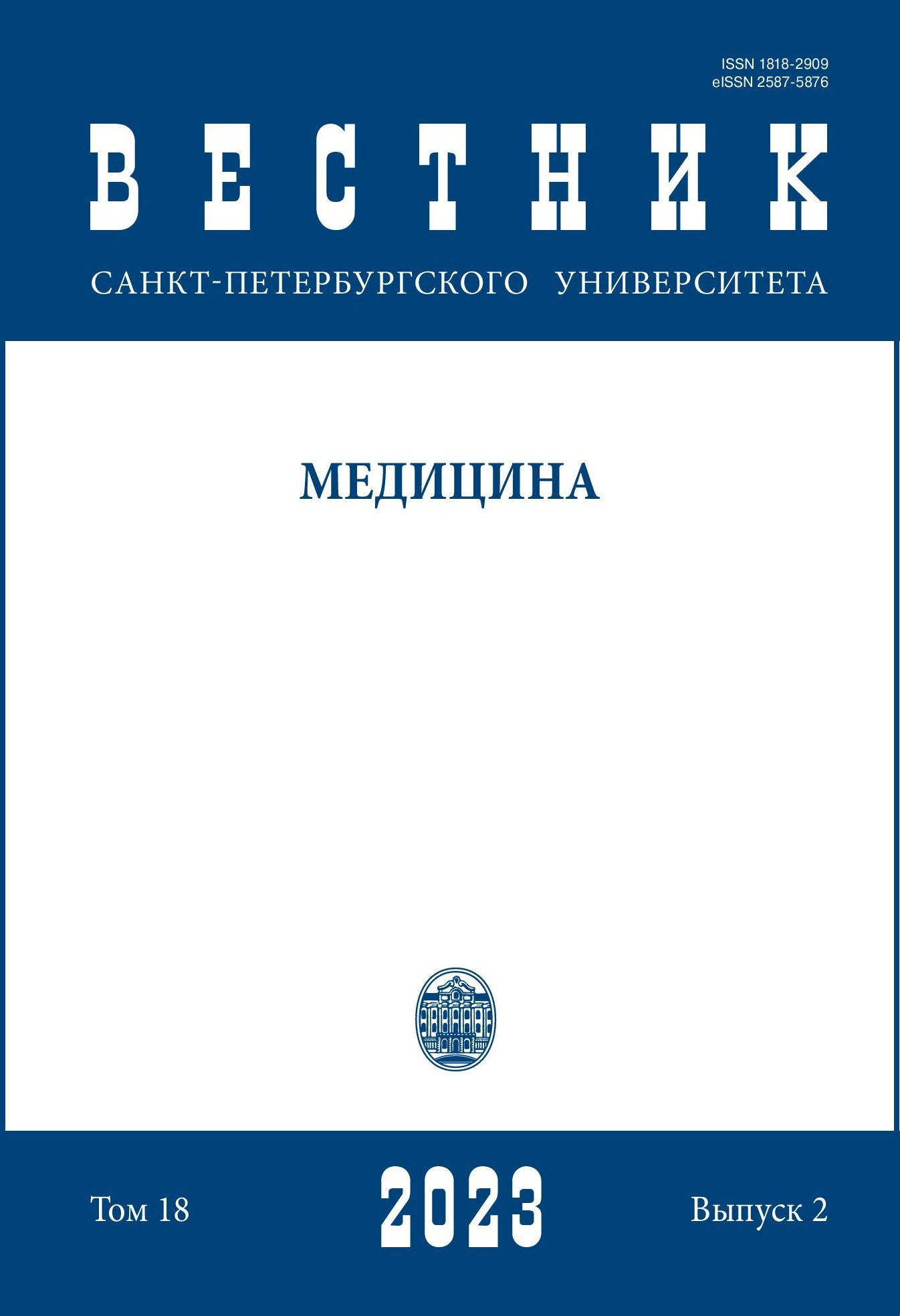Скрининговая оценка антибактериальной активности эфирных масел Thymus serpyllum L., Thymus marsсhallianus Willd. и Pimpinella anisum L. в отношении уропатогенов, выделенных от беременных женщин
DOI:
https://doi.org/10.21638/spbu11.2023.205Аннотация
Эфирные масла растений определенных родов и видов являются важными источниками антимикробных веществ. Целью исследования явилась скрининговая оценка антибактериальной активности эфирных масел Thymus serpyllum L., Thymus marsсhallianus Willd. и Pimpinella anisum L. в отношении условно патогенных грамотрицательных бактерий — возбудителей уроинфекций. Получение эфирных масел осуществляли из травы указанных видов растений методом паровой гидродистилляции. Скрининговую оценку антибактериальной активности проводили дискодиффузионным методом. В качестве опытных штаммов использовали стандартные культуры Pseudomonas aeruginosa ATCC 27853 и Escherichia coli ATCC 25922 (M17), а также шесть клиниче-
ских штаммов (один штамм P. аeruginosa и пять — E. coli), выделенные от беременных женщин с инфекциями мочевыводящих путей. Установлено, что эфирные масла T. marsсhallianus Willd. и T. serpyllum L. оказывают сильное подавляющее действие на все опытные штаммы обоих видов бактерий вплоть до отсутствия бактериального газона. Эфирное масло P. anisum L. в условиях эксперимента не проявило антибактериальной активности в отношении всех опытных штаммов. Зоны задержки роста не образовались. Эфирные масла тимьянов Thymus serpyllum L., Thymus marsсhallianus Willd. являются перспективными антибактериальными агентами в отношении уропатогеноввидов P. aeruginosa и E. coli.
Ключевые слова:
эфирные масла растений, антибактериальная активность, уропатогены, P. aeruginosa, E. coli, диско-диффузионный метод
Скачивания
Библиографические ссылки
References
antimicrobial agents — myth or real alternative? Molecules, 2019, vol. 24, no. 11, art. 2130. https://doi.org/10.3390/molecules24112130.
Загрузки
Опубликован
Как цитировать
Выпуск
Раздел
Лицензия
Статьи журнала «Вестник Санкт-Петербургского университета. Медицина» находятся в открытом доступе и распространяются в соответствии с условиями Лицензионного Договора с Санкт-Петербургским государственным университетом, который бесплатно предоставляет авторам неограниченное распространение и самостоятельное архивирование.





